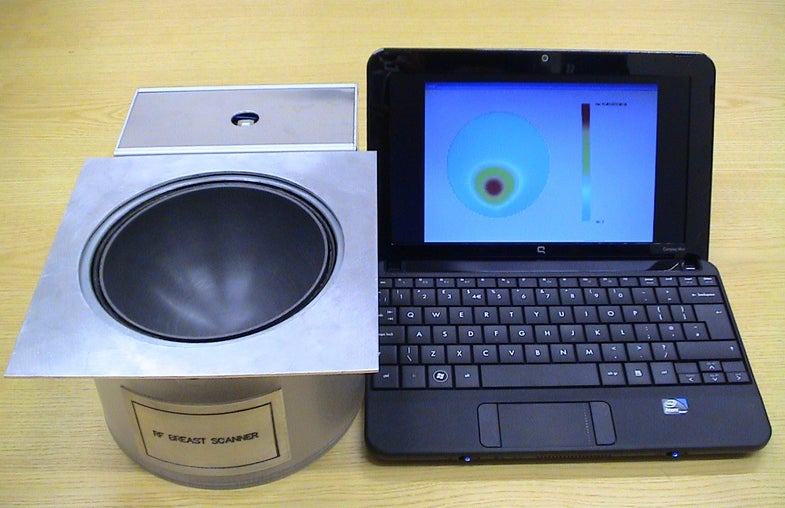Portable Breast Scanner Makes Real-Time Cancer-Hunting Quick, Painless, and Mobile
Just in time for the end of National Breast Cancer Awareness Month, a University of Manchester professor has developed a...

Just in time for the end of National Breast Cancer Awareness Month, a University of Manchester professor has developed a portable, radio frequency-based scanner that is able to show the presence of breast tumors, both malignant and benign, in real time.
The portable unit, which packs all the necessary electronic components into a package the size of a lunchbox, allows for quick, painless breast cancer exams outside of clinical settings, which should make them available to more women more often, particularly in the developing world. Not only is the system fast and less intrusive than conventional X-ray mammography, but it also could cut down on unnecessary doses of radiation from the mammography process and could allow women at high risk to monitor themselves regularly at home.
Aside from the X-ray doses, mammography has other potential drawbacks. For one, while it is very effective in diagnosing women over 50, it can be far less conclusive in younger women, in which 20 percent of breast cancer cases occur. Further, mammography is not a real-time procedure, so clinical staff could be more prone to miss a problem area. With the new system, patients simply lay down and insert their breasts into the scanning cup – no need for that special gel used in mammography, as the radio frequency method works with oil, milk, even water – and the scanner starts producing 30 images per second that are projected onto a screen. Clinicians can then thoroughly observe a potentially problematic area in real time until they are sure there isn’t a problem.
The radio frequencies behave differently in the presence of different tissues, so the operator can tell a lot about the underlying tissues from the scan. For instance, a tumor or abnormality will show up red on the screen. Malignant and benign tumors register different frequencies and appear different on the screen as well, allowing clinicians to make a rough diagnosis on the spot and determine if something needs closer, more invasive inspection.
Check the video below to see the technology in action. The red spot in the center indicates a trouble spot that requires further examination.